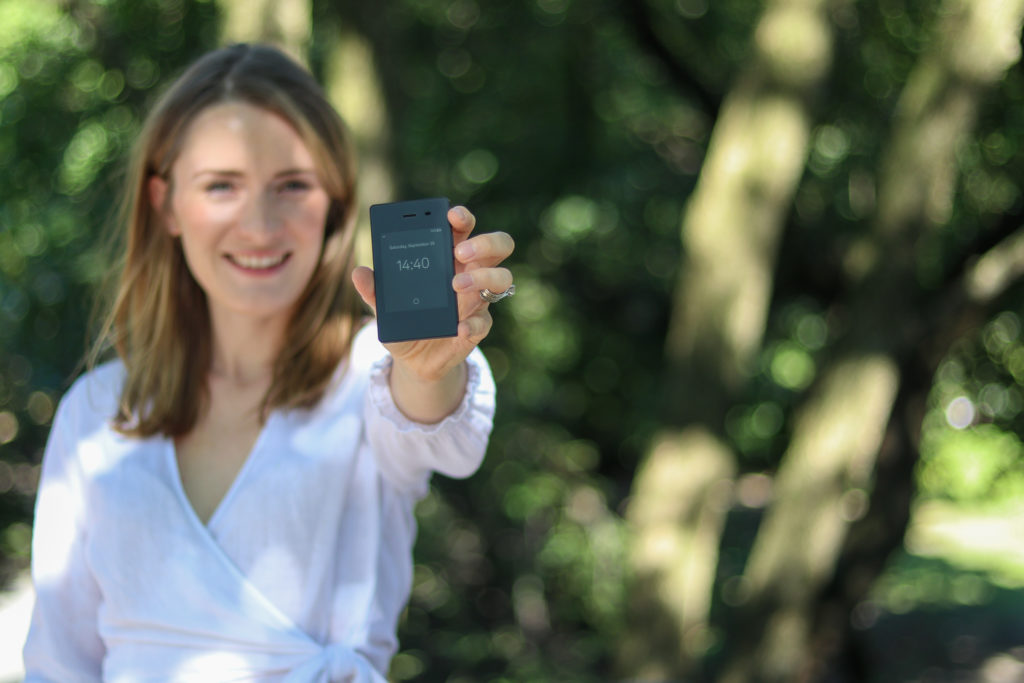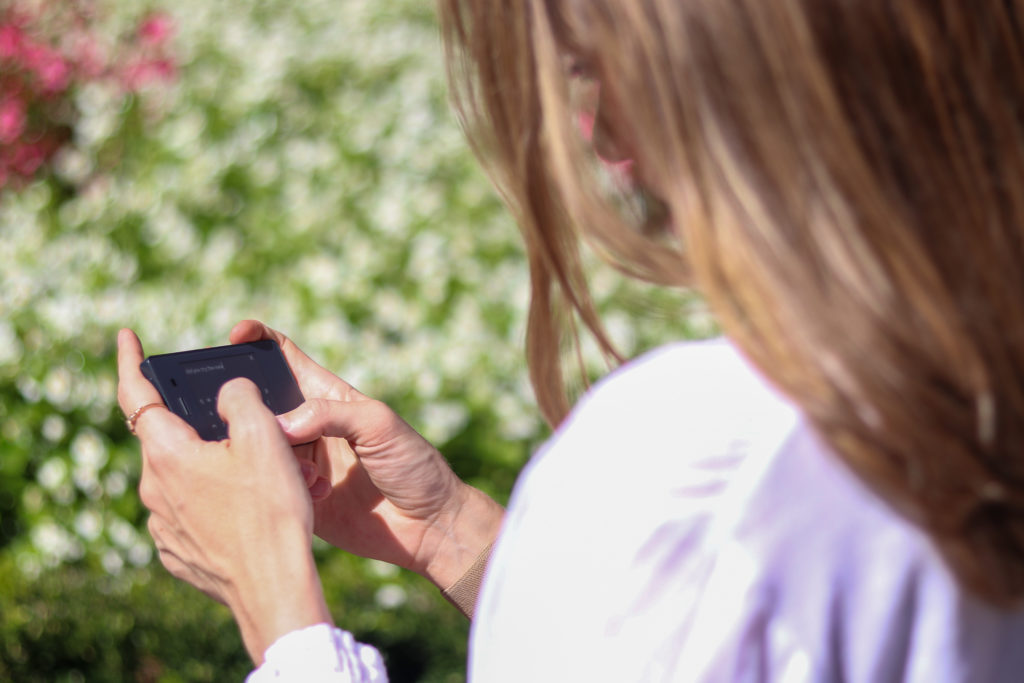How many times have you checked your phone today?
Whatever you answered, I can say that you’re almost certainly wrong — you did it a lot more than you think.
According to a recent study by Apple, the average American picks up their phone 150 times a day, using their device for an average of 300 minutes each day — that’s almost 25% of the day, including time you’re asleep!
And no judgment, but let me ask you, is all that time spent on your phone worth it?
In our modern world, a mobile phone is an almost-essential part of functioning. The ability to respond to emails, take important calls wherever you may be, or just stay connected with friends and business associates via social media is justifiably important.
But it can easily get out of hand for all of us.

The Negative Impacts of Too Much Screentime
In all transparency, I have struggled with this overuse myself. Managing an educational, Internet-based platform, such as The MAPS Institute, demands attention to email, social media, and miscellaneous administrative duties, not to mention the hours I spend sifting through research journals — and I do huge chunks of that on my phone.
As a result, picking up my phone can easily become something I do on autopilot — even when it’s not an intentional and productive use of my device. Not only was that time I wasn’t spending on my work, husband, or things I desired to do — I found that the extra screentime was disrupting my sleep and exacerbating my existing stress levels.
It turns out that I wasn’t imagining that the phone time was wreaking havoc on my sleep. In fact, the Center for BioNano Health used a Lateral Flow Assay (a real-time saliva test to reveal cortisol levels) to see how screentime shifted cortisol levels throughout the day.
Their work, as well as many other recent studies, have shown the stark relationship between screentime and increased cortisol levels. In fact, The Center for BioNano Health is working on a smartphone-linked measurement device that will reveal the psychological status of smartphone users with a mere drop of saliva.
Wouldn’t that be wild, to get a notice on your smartphone notifying you that you’re a bit on edge and should stop with the insta-scrolling?
But it’s more than just cortisol that’s impacting things. Whenever you use your devices in the evening, you risk your sleep quality. Whenever you are exposed to the blue light from your devices after the sun goes down, it can suppress the production of melatonin — a key driver in regulation of lots of hormones, immune function, and circadian rhythm.
And to top all of that off, as you may be familiar – standard smartphones can be detrimental to our focus with the beckoning calls of pings, beeps, and the dopamine-rich invitations of your favorite influencer’s new reel.
Ways to Make Screentime a Bit Less Impactful
Clearly, it’s your best interest — sleep, health, and otherwise — to reduce the impact of your screentime.
The obvious challenge for most of us is that because our mobile devices are so central to our lives today, there’s only so much screentime reduction we can really achieve. So while reducing your screentime is an important first step (to help, you can apply some of these 17 ways to make your smartphone less distracting), the real question is how can you make your devices less impactful when you do need to use them?
One of the first places to start is to try to reduce the amount of blue light they emit. You can do that by wearing special blue light removing glasses, by applying a blue light filter to your devices, or even by adjusting the color settings on your phone directly to make it red-tinted. If you want to try this low-cost, DIY approach, you can do that on an iPhone by going to Settings > Accessibility > Display Accommodations > Color Tint > And then pull Hue to the far left for a dark red and set the intensity to the far right (adjusting so it’s readable).
The hard part for most of us, though, is that changing the hue and turning off reminders only gets you so far — and ends up creating this sort of huge, perpetual temptation to just turn everything back on, leaving you right where you started.
That’s why discovering the Light Phone was a huge game-changer for me.
It is basically a smartphone that has all of the blue light and distractions removed — by design — and I found that it allowed me to be more present in my day-to-day life while still being able to communicate when out and about and during my workday.
Essentially, it provides all the power and benefits of a smartphone, but without social media apps, the constant pings of emails, anxiety-inducing news stories, or instant access to search everything — and I found it was exactly what I needed to soothe my nerves.
When I spoke with co-founder Joe Hollier about their approach, he described it as an experience they call “going light.”
And while I get the branding tie-in, for me the Light Phone actually allowed me to go bolder by allowing me to be more dynamic, present, and human in my everyday interactions.

The Light Phone: A Nervous System Friendly Alternative
As soon as I started using the Light Phone, I immediately found myself less stimulated. Part of it was because my email app was no longer, but it was also thanks to the minimalist menu and the epaper screen (the same technology used in Kindles and some other e-readers), which prevents you from having to turn your smartphone screen that super sexy red color I mentioned earlier.
The lack of access to email was, admittedly, briefly unnerving. But I quickly recognized that no email was so urgent that it couldn’t wait a few hours to be checked on my computer. (That may not be true for everyone, but before you say your email is that urgent, I challenge you to check yourself on it!)
While the Light Phone generates far fewer pings — again, by design — those that it does fire off are actually quite pleasant and seemed to me, to be less stimulating to your nervous system. The ringtones and alarm clock tones, courtesy of the über talented Gabriel Garzón Montano, are actually a delight to wake up to and evoke a sense of calm — even when your mom is calling you about Thanksgiving plans (true story!).
My ultimate favorite component of the Light Phone II is the ability to upload your own music — or in my case, meditation tracks. While that’s hardly a revolutionary piece of technology, going old-school with your music (or meditation — I even uploaded my self-recorded audio tracks of my singing bowls!) forces you to be mindful and deliberate — and keeps you from doomscrolling through your favorite music streaming service when you should be focused on other things.
While the Light Phone may not be a full-time device for everyone, it can be an incredible way to give yourself a stimulation break. I’ve found that I like to use it alongside my iPhone, switching to the Light Phone when I want to give my nervous system a well-deserved rest, or just when I find I’m not being quite as mindful, and invested in the world around me. And inevitably when I do, I find that using the Light Phone II helps me check back into the real world and re-experience humanness with greater sensitivity.
And isn’t that something we could all use a bit more of?
Note: Light Phone provided a device for testing at no charge, however, the author and The MAPS Institute maintains full editorial control over this article.
